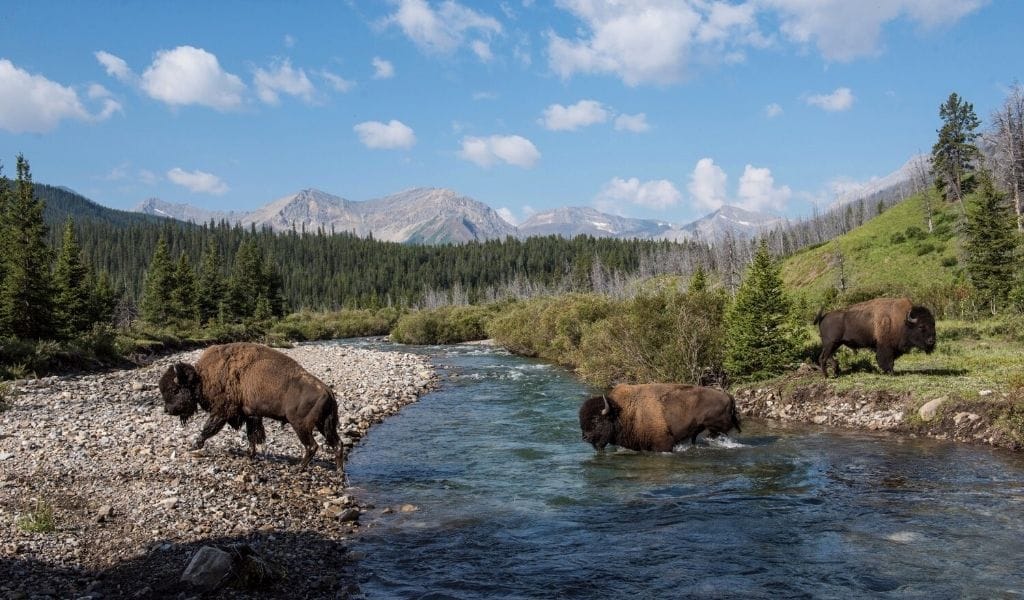- Bow Valley Insider
- Posts
- Banff’s Bison Return Shows How Wildlife Adapt to Fencing
Banff’s Bison Return Shows How Wildlife Adapt to Fencing

A new study on Banff’s bison reintroduction shows the impact of wildlife fencing
Banff, Alberta - In 2017, nearly 150 years after they disappeared, plains bison returned to Banff National Park. Parks Canada brought 16 disease-free bison from Elk Island National Park, kept them in a soft-release pasture for more than a year, and in 2018 released them into a 1,200 square kilometre wild zone in the backcountry. The idea was to restore a keystone species that once shaped the landscape, while making sure other wildlife could still move freely. That meant building fences to keep the bison from wandering outside the zone without turning the park into a series of barriers.
A new study has found that many species adapted to these fences over time. The short-term disruptions were real, but they faded as wildlife learned to navigate the fences more effectively.
Bison once roamed across the plains and foothills in huge numbers, but by the late 1800s they had been hunted or displaced to near extinction. Their return to Banff is both ecological and cultural. Ecologically, bison grazing influences vegetation, opens up habitat, and benefits other species. Culturally, the project has involved Indigenous communities, including the Stoney (Nakoda) peoples, and is tied to revitalizing traditional knowledge and practices. By 2023, the herd had grown to more than 100 animals, marking an early conservation success.
The fences in Banff were designed to contain bison while allowing other animals to pass through. When researchers first evaluated them a few years ago, they found that some wildlife, especially elk, were slower and less likely to cross near the fences. Elk crossing success dropped from roughly 72 percent before the fences to about 60 percent afterward, and their travel speeds slowed. Some species were seen less often near fences, while others, like coyotes and black bears, were seen more often, likely due to changes in how they used the landscape.
The follow-up study looked at four years of camera data and more than two decades of elk GPS collar data to see if these changes persisted. It found that the effects were temporary. About two years after the fences were installed, elk began crossing more successfully again, and their speed returned toward pre-fence levels. Other species also showed complex but generally stable patterns over time. The fences did their job of keeping bison in without creating long-term problems for other animals.
For local residents, this research offers a useful lesson. Fences are not automatically harmful if they are thoughtfully designed. Short-term changes can look dramatic, but wildlife often adjusts. Long-term monitoring is essential to understand the real impacts rather than making quick judgments based on early effects. The Banff bison project also involved significant public and Indigenous engagement, which helped shape the design and management approach.
Today, the herd continues to grow, and Parks Canada is working on a long-term plan that considers range expansion and cross-boundary management. In 2024, an Indigenous-led ceremonial hunt of bison took place in Banff for the first time in more than a century. This represents an important step in connecting ecological restoration with cultural renewal.
The study’s main message is simple: wildlife can adapt. Fences initially disrupted movement, but within a few years elk and other species learned to move through the landscape as before. The Banff project is becoming a model for how to reintroduce species while preserving connectivity, and it shows what careful planning, patience, and monitoring can achieve.
Reply